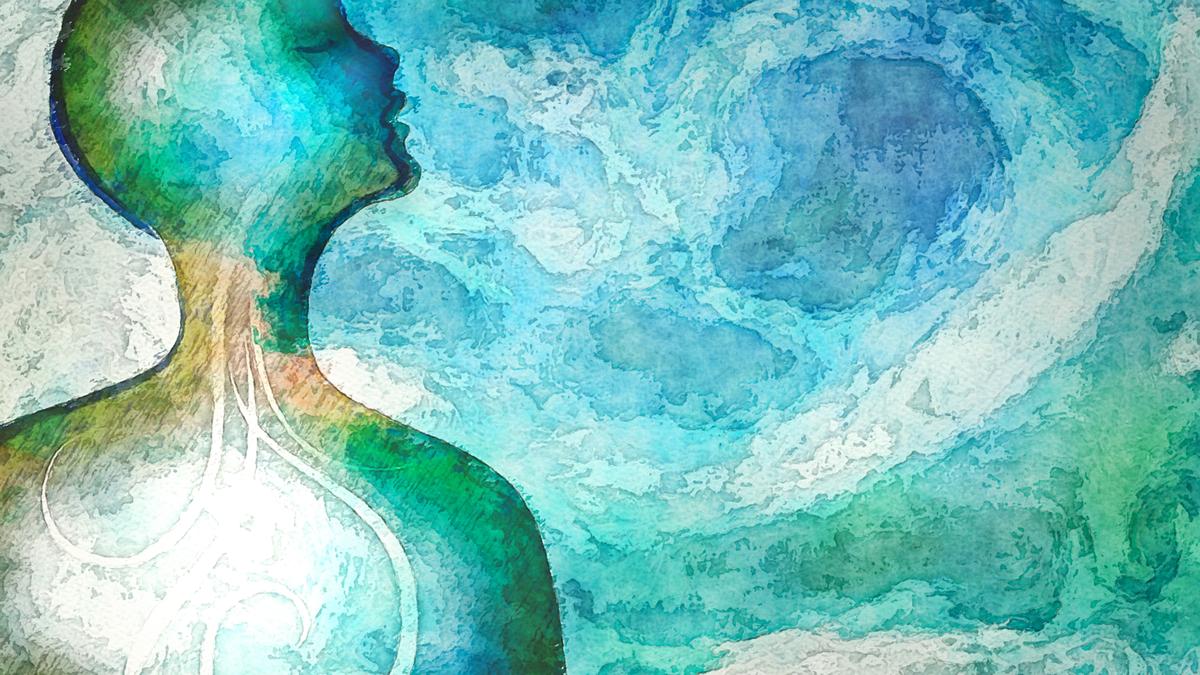Are You Taking the Air You Breathe for Granted?

Understanding the Power of Breath: A Journey Through Science and Tradition
At the start of 2020, a small but dedicated group of scientists endeavored to convince public health organizations that COVID-19 was spread through the air we breathe. Until that time, the prevailing belief was that respiratory diseases primarily transmitted through droplets, which were thought to have a limited range. However, their research revealed a startling truth: breath, as a medium, plays a significant role in the transmission of various pathogens, including viruses and bacteria. This shift in understanding is encapsulated in Carl Zimmer’s compelling exploration in his book, Air-Borne: The Hidden History of the Life We Breathe.
This article delves into the intricate relationship between breath and health, examining the historical context, modern scientific insights, and traditional practices that highlight the importance of understanding how we breathe. As we explore the many facets of breath, we will uncover its significance as a vital life force and a potential tool for enhancing our well-being.
The Historical Context of Breath in Medical Science
For centuries, the concept of breath has been intertwined with human existence. The historical narrative of breathing, particularly in the context of health, is rich and complex. Early pioneers like Louis Pasteur laid the groundwork for understanding germs in the air, while figures such as Amelia Earhart and Charles Lindbergh contributed to our understanding of aerobiology. These early explorations revealed a dark side, too, as they highlighted the potential for airborne pathogens to be weaponized.
Moreover, the advent of modern medicine has gradually shifted perspectives on breathing. Traditional views categorized breathing as a basic biological function, often overlooking its broader implications for health. However, recent studies have started to illuminate the profound effects of breathing techniques on physical and mental health, leading to a renaissance in the practice of mindful breathing.
The Essence of Breath: More Than Just Air Exchange
Breath is not merely an exchange of oxygen and carbon dioxide; it is an invaluable gift that signifies life itself. As Prem Rawat eloquently states, “Breath is the greatest mystery, out of nowhere it comes to nowhere it goes.” This sentiment encapsulates the dual nature of breath as both a beginning and an end in the cycle of life. Each inhale and exhale represents a moment of existence, and the act of breathing is a reminder of our connection to the universe.
Numerous traditional practices have celebrated the significance of breath. For example, the ancient sage Patanjali emphasized pranayama, a series of breath control techniques, as a means to enhance physical and spiritual well-being. Similarly, Buddha recognized the link between breath and consciousness, suggesting that mindful breathing can lead to greater awareness and enlightenment.
The Scientific Validation of Breathing Techniques
Recent research has revealed that nine out of ten people do not breathe correctly, leading to various chronic health issues. James Nestor, in his book Breathe: The New Science of a Lost Art, emphasizes the need for corrective breathing practices. Surprisingly, conventional medical institutions have only recently begun to acknowledge breathing as a critical component of health management.
Correct breathing is not just a simple act; it requires awareness and practice. Nestor suggests that by adopting a strict breathing regimen, individuals can significantly improve their breathing efficiency. For instance, transitioning from mouth breathing to nasal breathing can unlock numerous health benefits, including clearer nasal passages and improved oxygenation of the body. This transition, while challenging, offers a pathway to enhanced well-being.
The Transformative Power of Breathing Techniques
Breathing techniques have been practiced for millennia, yet modern science is now validating their benefits. Techniques such as alternate nostril breathing, resonant breathing, and Buteyko breathing have gained popularity, particularly in the realm of yoga and holistic health. The resurgence of interest in these practices reflects a growing recognition of their potential to improve physical and mental health.
Research in fields such as pulmonology, psychology, and biochemistry has demonstrated that changing how we inhale and exhale can alleviate conditions like asthma, anxiety, and even psoriasis. Nestor argues that breathing techniques could revolutionize the health sector, offering preventive measures that keep minor health issues from escalating into more serious conditions.
Breathing as Preventive Medicine
Modern medicine has often overlooked the wisdom of ancient practices. However, as the understanding of breath deepens, there is a pressing need to integrate these insights into contemporary healthcare. Breath serves as an indicator of well-being—when we are calm and centered, our breathing is typically slow and deep. Conversely, stress and anxiety can lead to rapid, shallow breaths.
The potential for breathing techniques to act as preventive medicine is immense. By fostering a deeper understanding of how breath influences our physical and mental state, individuals can take proactive steps to maintain balance and health. The powerful connection between breath and well-being underscores the importance of incorporating breath awareness into our daily lives.
Practical Applications: Incorporating Breath Awareness in Daily Life
Integrating breath awareness into daily routines can lead to significant improvements in overall health. Here are some practical applications of breathing techniques that can be easily incorporated into everyday life:
- Mindful Breathing: Set aside a few minutes each day to focus on your breath. Inhale deeply through your nose, allowing your abdomen to expand, and exhale slowly through your mouth. This practice can help reduce stress and promote relaxation.
- Breathing Exercises: Explore various breathing exercises such as diaphragmatic breathing, box breathing, or the 4-7-8 technique. Each method offers unique benefits, from calming the mind to enhancing focus.
- Yoga and Meditation: Incorporate breathing techniques into yoga or meditation practices. Many traditional yoga practices emphasize the importance of breath control, enhancing both physical and mental well-being.
- Posture Awareness: Pay attention to your posture while breathing. Sitting or standing tall can facilitate better airflow and oxygen exchange, promoting healthier breathing habits.
- Breath Checks: Throughout the day, take a moment to check in with your breath. Notice if it is shallow or rapid, and consciously slow it down when feeling stressed or anxious.
Conclusion: The Breath of Life
As we navigate the complexities of modern life, the importance of breath cannot be overstated. It is a fundamental aspect of our existence, linking us to our bodies, minds, and the world around us. The insights gained from both scientific research and traditional practices highlight the transformative power of breath in promoting health and well-being.
As we continue to explore the depths of this vital life force, let us embrace the wisdom of the past while integrating it into our modern understanding. By valuing and practicing correct breathing techniques, we can unlock a wealth of benefits that enhance our quality of life and foster a deeper connection to ourselves and the universe.
FAQs about Breath and Breathing Techniques
What is the importance of breathing correctly?
Correct breathing is crucial for optimal oxygen exchange, reducing stress, and improving overall health. Many chronic conditions can be mitigated by adopting better breathing practices.
How can I incorporate breathing techniques into my daily routine?
Start with simple mindful breathing exercises, explore various breathing techniques, and integrate them into activities like yoga or meditation. Regular practice can lead to significant benefits.
Can breathing techniques help with anxiety and stress?
Yes, many breathing techniques are designed to induce relaxation and calm the mind, making them effective tools for managing anxiety and stress.
As you reflect on the significance of breath in your life, consider how you can cultivate a deeper awareness of this essential life force. In what ways can you incorporate mindful breathing into your daily routine to enhance your health and well-being? #BreathOfLife #MindfulBreathing #HealthAndWellness
Published: 2025-06-19 03:00:00 | Category: Uncategorized



